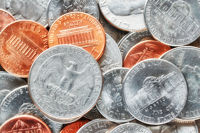Posted on February 15, 2021

The U.S. Mint has undergone considerable evolution since it was first created in the early days of the United States. Understanding the Mint's history, evolution, and the role it continues to play in the U.S. gives insight into the coins and other products you can purchase. The content below will explore the U.S. Mint from its inception to today.
The U.S. Mint is a governmental entity that makes both coins that are used as currency and special edition coins, which individuals purchase for collections. The parent agency of the U.S. Mint is the U.S. Department of the Treasury.
The U.S. Mint is the world's largest bullion and coin dealer. The Mint is also one of the oldest agencies of the United States federal government.
The U.S. Mint plays a variety of roles. U.S. Mint police secure assets by patrolling the Treasury Department's gold reserves. In addition, the U.S. Mint manufactures and distributes:
The Mint is the sole manufacturer of legal tender coinage for the country and is responsible for creating the circulating coinage used when the nation conducts commerce and trade. Coins produced by the U.S. Mint also depict the story of the United States through their imagery.
The Mint also produces other products related to coins, including:
The Mint is a self-funded entity that does not receive taxpayer funding.
The history of the U.S. Mint is entwined with the history of the official currency of the United States, the American dollar. The Coinage Act of 1792 [1], also known as the Mint Act, authorized the production of 10 different denominations for coins. These early coins included gold coins, silver coins, and copper coins.
Gold coins included:
Silver denominations included:
Copper coins included:
The first Mint was erected in 1792 two blocks away from where the present-day Mint stands in Philadelphia, which was then the capital city of the United States. At the time, citizens of the new country held deep suspicions regarding federal power, and they were accustomed to using coins that state banks issued. Though the idea of a single federal mint that produced uniform coinage was unsettling for many, Alexander Hamilton (a staunch federalist) led a coalition that prevailed. As a result, the First Bank of the United States and the United States Mint came to be.
The Mint actually struck the first coins using silver that came from George Washington's household. When Washington, D.C., was ready as the new capital city in 1800, the government did not have the funds to replace the Mint in Philadelphia. By that time, the Mint was also already efficient. Then, in 1828, Congress passed an act to make sure the Mint would permanently remain in Philadelphia.
By the latter stages of the 1820s, a need for space demanded a second Mint. A second building was completed in Philadelphia in 1833. A third Mint was erected in the city for the same reason in 1901. The fourth Mint in Philadelphia, which is still in use, was constructed when yet again a larger space was needed. This Mint also offers more sophisticated security and better access to highways than previous sites.
Today, the United States has four mints, located in:
The United States also has a bullion depository at Fort Knox that is considered part of the Mint system.
The U.S. Mint mints some coins for general circulation and others just for collections. The U.S. Mint today strikes a variety of coinage in metals, such as:
Popular coins minted in the United States today include:
Various denominations, dates, and types of coins from the U.S. Mint qualify as rare coins. Coins produced during a 141-year period spanning from the beginning of the U.S. Mint to 1933, when President Franklin D. Roosevelt signed the Gold Recall Act taking the United States off the gold standard [2], are considered rare coins.
The U.S. Mint frequently draws intense criticism from the numismatic community. Critics point to a variety of things they take issue with, including:
The U.S. Mint has undergone considerable evolution since it was first created by the Coinage Act in 1792. In addition to the coins you use on a daily basis, the U.S. Mint produces coins and other related products valued by collectors.
1. United States Mint. 'Coinage Act of April 2, 1792,' https://www.usmint.gov/learn/history/historical-documents/coinage-act-of-april-2-1792. Accessed August 30, 2020.
2. History. 'FDR Takes United States off gold standard,' https://www.history.com/this-day-in-history/fdr-takes-united-states-off-gold-standard. Accessed August 30, 2020.